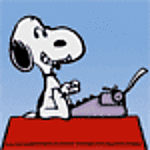1⁄35
Texturing AFV Surfaces
 |
Weld Seams |
Weld seams are an often neglected feature on AFV-models,
especially on older injection moulded ones. If you check a real AFV you will
be amazed to discover all those more or less crude and MANY weld seams. I
want to describe some methods I am using to represent weld seams on AFV
models. I started with a "normal" soldering piston but had some troubles as
even after sharpening the tip it was too thick and I could not regulate the
temperature – but it was good enough to do a KV I at least.
I then invested about $90 for a soldering station, designed for soldering
computer parts. The station provides a regulation for the heat and 2
different sizes of soldering pistons and different soldering tips. I still
had to sharpen the tips by fixing each into a motor drill and wrap sandpaper
around it. But I got a point, sharp as a tip of a fresh sharpened pencil,
soon.
After having this prerequisite you can start working. I use a temperature
between 220 and 240°C, depending on the plastic, and start "welding" the
relevant area by holding the soldering piston in an about 30-45 degrees
angle and dotting the soldering point very gently to the plastic. No matter
if there is already a weld seam on the kit or not, the plastic is formed
from the heat, representing something very close to a weld seam.
If thicker weld seams are needed I first glue a piece of stretched sprue
onto the desired area and after 24 hours I start "welding" it. My best
experiences with sprues are Tamiya old yellow or new drab ones. I did not
try the orange ones. The old dark green ones are not melting smoothly and
when touched with a soldering iron they transform into small plastic balls.
While welding, small plastic particles may stick on the pointer creating
"plastic hair" on the kit. Do not panic, a tip of liquid glue will let it
shrink and disappear.
But there are even weld seams which are so tiny, that the soldering tool is
too clumsy. I then glue a very thin piece (not thicker than a hair) of
stretched sprue to the relevant area and gently stroke liquid glue over it
for 2-3 times. After 10-20 minutes I start sticking a dental tool (a rounded
needle or sharpened toothpick will serve also) into the sprue and create the
seam. Copyright ©2002 - Text by Werner Kampfhofer (tankbuster).
Photos by Hannelore Zajic, Wolfram Bradac, Robert J. Sladek, and Tankbuster. All Rights Reserved. |
| Project Photos


|
 |
About the Author
About Werner Kampfhofer (tankbuster)
Copyright ©2021 by Werner Kampfhofer. Images and/or videos also by copyright holder unless otherwise noted. The views and opinions expressed herein are solely the views and opinions of the authors and/or contributors to this Web site and do not necessarily represent the views and/or opinions of Armorama, KitMaker Network, or Silver Star Enterrpises. All rights reserved.













